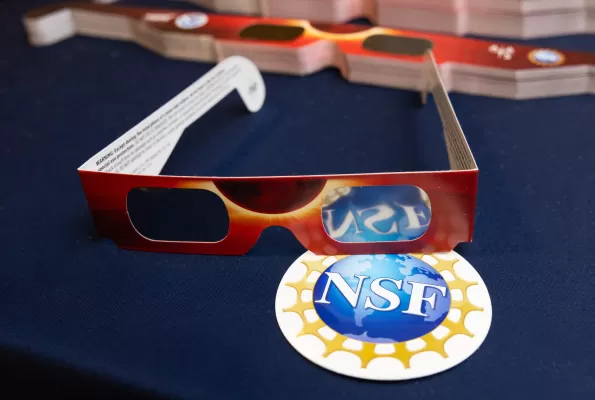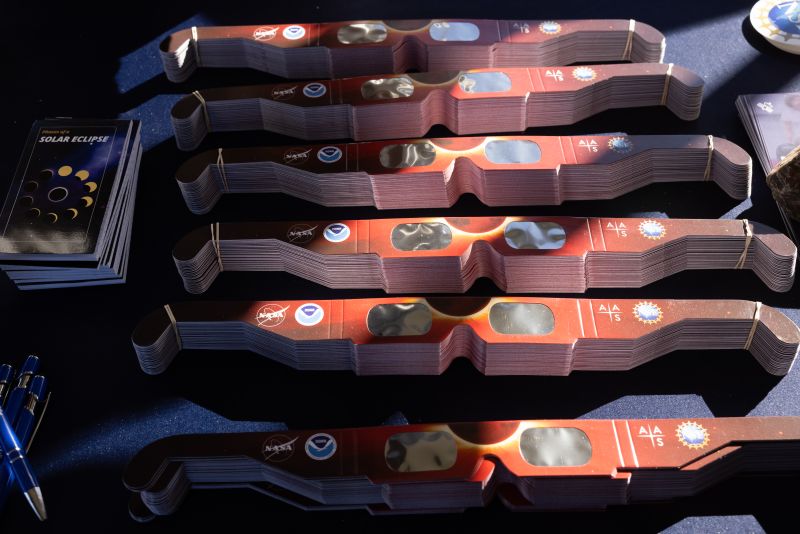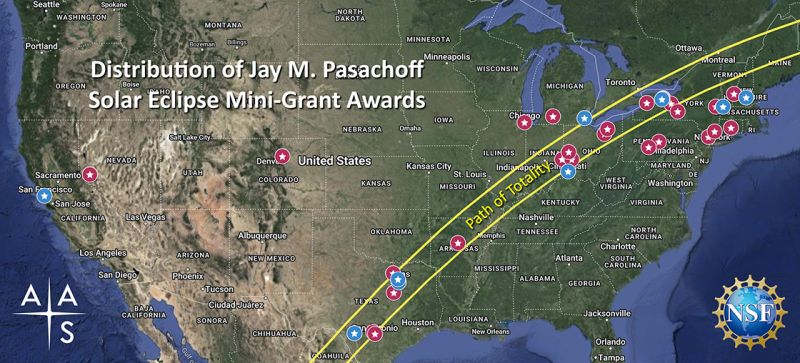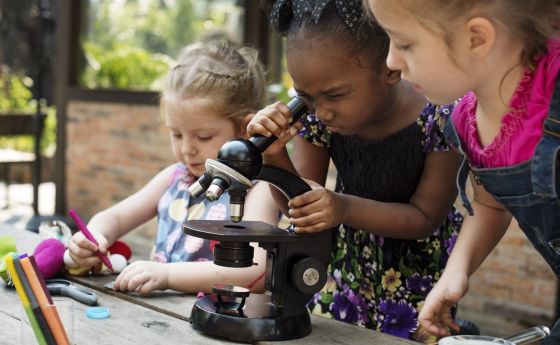
The 2024 total eclipse on April 8 – where to watch
On Monday, April 8, a total solar eclipse will pass over North America, starting in Mexico, traveling northwest across the United States, and ending in Canada.
In the U.S., totality — which occurs when the sun is fully covered by the moon — will be visible in parts of Texas, Oklahoma, Arkansas, Missouri, Tennessee, Illinois, Kentucky, Indiana, Ohio, Michigan, Pennsylvania, New York, Vermont, New Hampshire and Maine. The maximum width of the eclipse path is 122 miles and includes San Antonio, Austin, Dallas, Fort Worth, Little Rock, Evansville, Indianapolis, Dayton, Toledo, Cleveland and Buffalo.
If you aren't in the path of the eclipse (or you're stuck inside) join the U.S. National Science Foundation at YouTube.com/@NSFScience for an educational livestream about the eclipse featuring scientists who study the sun and the high-tech facilities they use, including the NSF Daniel K. Inouye Solar Telescope, the largest solar telescope in the world. NSF's livestream is a free resource that teachers can use in their classrooms to share the excitement of science.
Below are a few of the eclipse viewing events taking place across the country with help from the U.S. National Science Foundation.
Dallas
NSF, NASA and the U.S. National Oceanic and Atmospheric Administration are sponsoring the Sun, Moon, and You Solar Eclipse Viewing Event at the Cotton Bowl Stadium.
With 92,100 seats and no roof, this is an ideal place to view the eclipse. The event will include talks from scientists and astronomers along with space explorer characters from the PBS show "Ready, Jet, Go." There will also be tents from STEM-related organizations, where visitors can participate in activities and hands-on experiments, and NSF will have booths in the stadium concourse.
NSF will also be at the parks and rec department's outdoor eclipse festival, several branches of the public library system, and the Perot Museum of Nature and Science.
- The eclipse will begin in Dallas shortly after noon. Totality will be between 1:40 and 1:44 p.m. Central Daylight Time.
Cleveland
NASA is hosting Total Eclipse Fest April 6-8 at the Great Lakes Science Center. The event includes information about youth-serving organizations trained to conduct citizen science eclipse-related investigations funded by NSF.
- The eclipse will begin at 1:59 p.m. Eastern Daylight Time. Totality will begin just before 3:15 p.m. and will last about 3 minutes and 40 seconds. The eclipse will end at 4:29 p.m.
The National Mall in Washington, D.C.
The National Air and Space Museum — in collaboration with other Smithsonian museums, NSF, NASA, the National Oceanic and Atmospheric Administration and the National Radio Astronomy Observatory (NRAO) — will host an outdoor festival on the National Mall.
The event will run from noon to 4 p.m. and feature activity stations to view the sun, including sun spotters, telescopes and pinhole projectors.
- The eclipse will be visible in the Washington, D.C. area between 2:04 p.m. and 4:32 p.m. EDT. Maximum eclipse will be at 3:20 p.m., with the sun 89% covered by the moon.
National Center for Atmospheric Research Mesa Laboratory
The NSF National Center for Atmospheric Research's Center for Science Education, funded by NSF and managed by the University Corporation for Atmospheric Research, will host an eclipse viewing event at its Mesa Laboratory, in Boulder, Colorado, from 10:30 a.m. to 2 p.m. Mountain Daylight Time.
- This partial solar eclipse will begin at 11:28 a.m. and reach a maximum of about 70% coverage at 12:40 p.m. During the eclipse, there will be free hands-on activities and solar viewing opportunities for visitors.
Very Large Array
The NSF Karl G. Jansky Very Large Array (VLA), located near Albuquerque, New Mexico, will host public events prior to the eclipse and a public viewing on April 8. VLA, a centimeter-wavelength radio astronomy observatory, is a component of the NRAO and funded by NSF.
On March 16 and April 8, as part of VLA's Public Guided Tours program, eclipse glasses will be given away to the first 500 tour participants. On the day of the eclipse, programming at VLA will include sun spotters and limited supplies of eclipse glasses and pinhole projectors.
- Maximum coverage of the sun viewed from VLA will be 73% at 12:30 p.m. Mountain Daylight Time.
Jay M. Pasachoff Solar Eclipse Mini-Grants Program
There are also smaller event that will take place across the U.S. The American Astronomical Society (AAS) Solar Eclipse Task Force awarded grants to 35 organizations or institutions under the Jay M. Pasachoff Solar Eclipse Mini-Grants Program. The awards were named in honor of Pasachoff, who was supported by NSF's Division of Atmospheric and Geospace Sciences for decades for solar eclipse expeditions around the world that involved undergraduate students as key members of the science team.
The program, funded by NSF, selected projects based on their potential to engage in eclipse education, outreach and science activities with underrepresented groups "who often don't imagine themselves in science careers or who believe that science is 'not for them,'" said AAS.
Among the awardees are:
- National Solar Observatory, Eagle Pass, Texas: Sun Science Tent — This project will provide a sensory and educational experience for the public and K-12 students witnessing the solar eclipse at the National Solar Observatory's eclipse viewing site at the Eagle Pass Student Activity Center in Eagle Pass, Texas. Experiments will include the investigation of spectroscopy and the multiwavelength nature of light with spectral discharge tubes and infrared experiments. The Sun Science Tent will also allow visitors to experience the partial eclipse using reflective disco balls, sun catchers and pinhole cameras. The science experiments will also be used in the days leading up to the eclipse, during multiple school visits across the Del Rio and Eagle Pass school districts. Eagle Pass has a 94% Latino population and has high educational demand for extracurricular education opportunities.
- Williams College, Williamstown, Massachusetts: Solar Eclipse Outreach in the Footsteps of Jay Pasachoff — Williams College, where Pasachoff taught for decades, will conduct a series of outreach events surrounding the solar eclipse. The goal is to inspire students to study science and provide college students with opportunities for community engagement. Activities include visiting local schools, using portable telescopes for solar viewing, collaborating with on-campus diversity-focused organizations and hosting an eclipse viewing event. The target audience includes local schoolchildren, college students and low-income communities.
For a full list of projects and their locations, visit the AAS Jay M. Pasachoff Solar Eclipse Mini-Grant Awardees & Projects webpage. There are also partnerships with Girl Scouts and Boys and Girls Club of America, along with many libraries, schools and museums along the path of totality.






